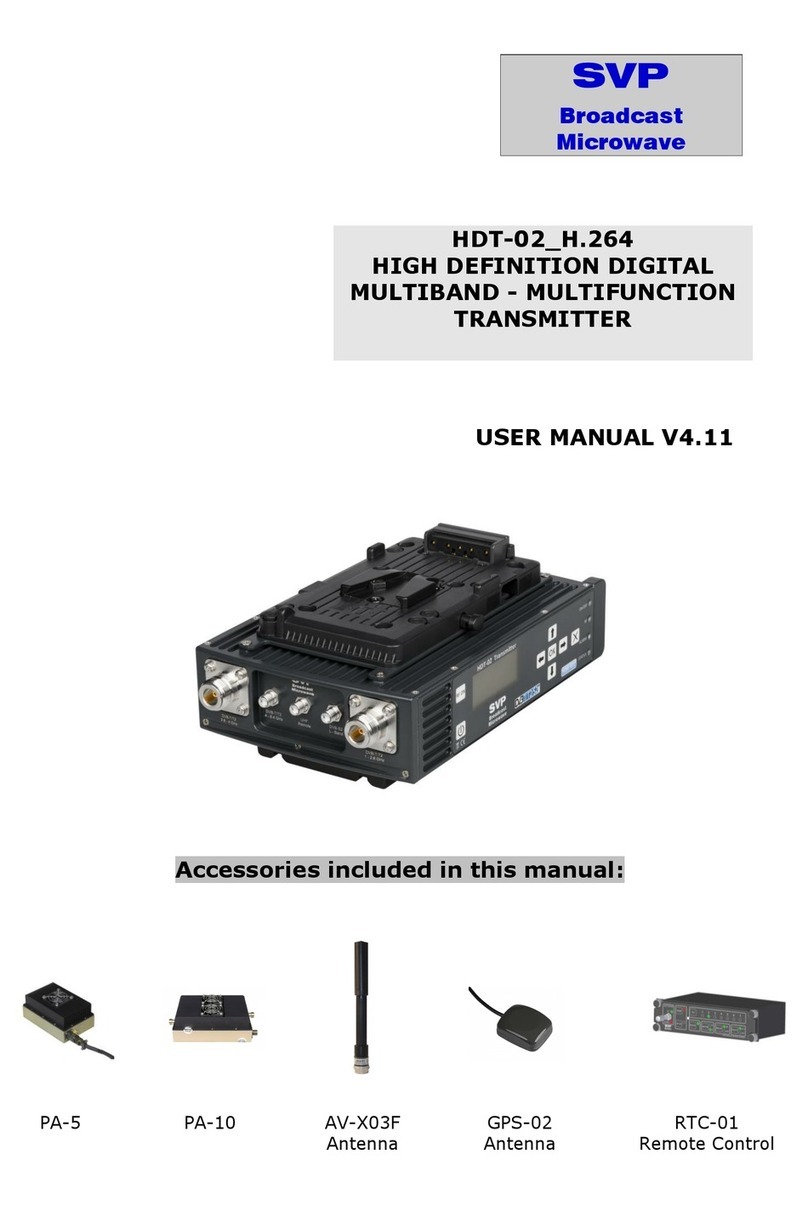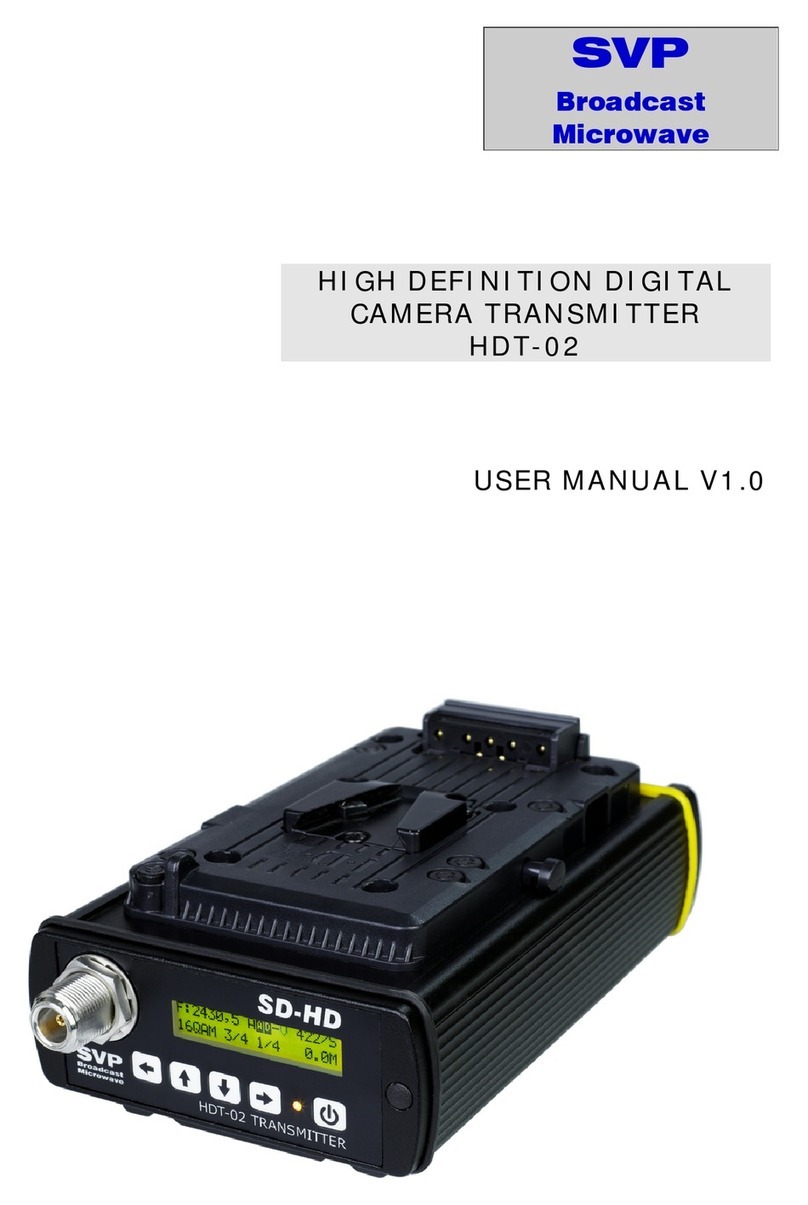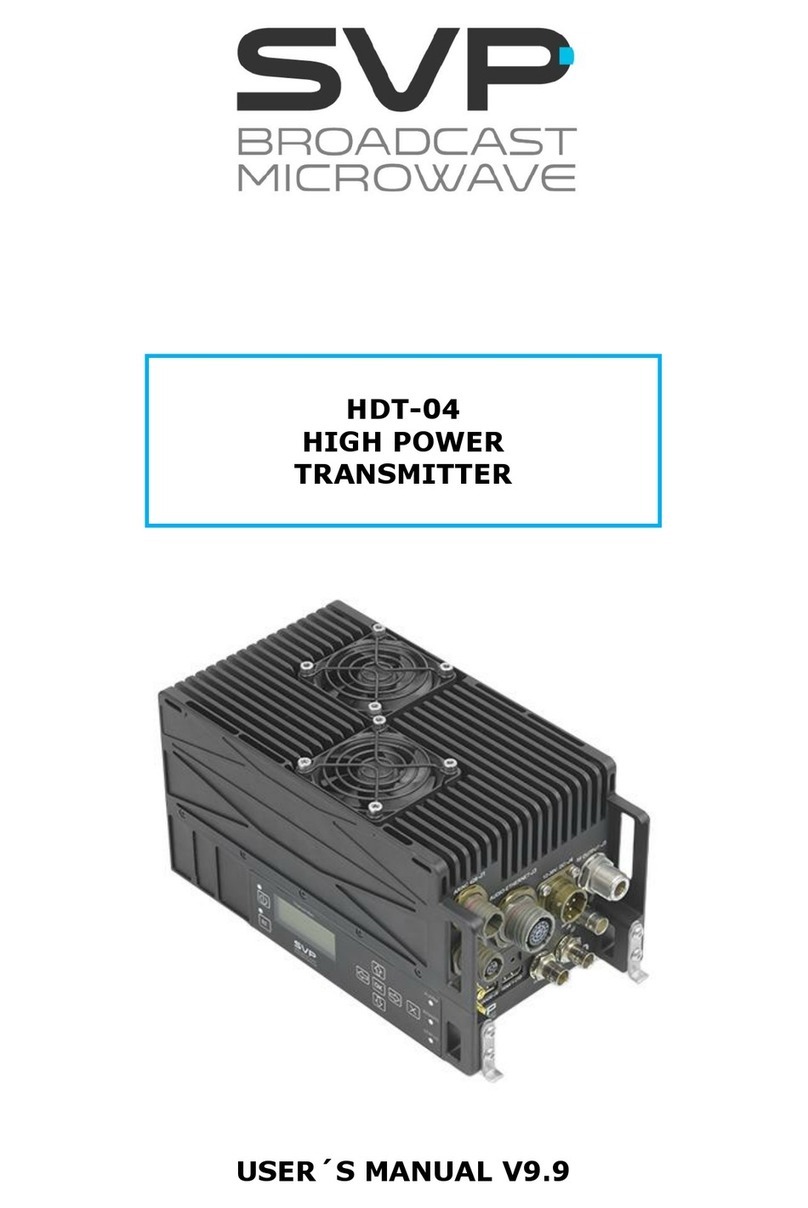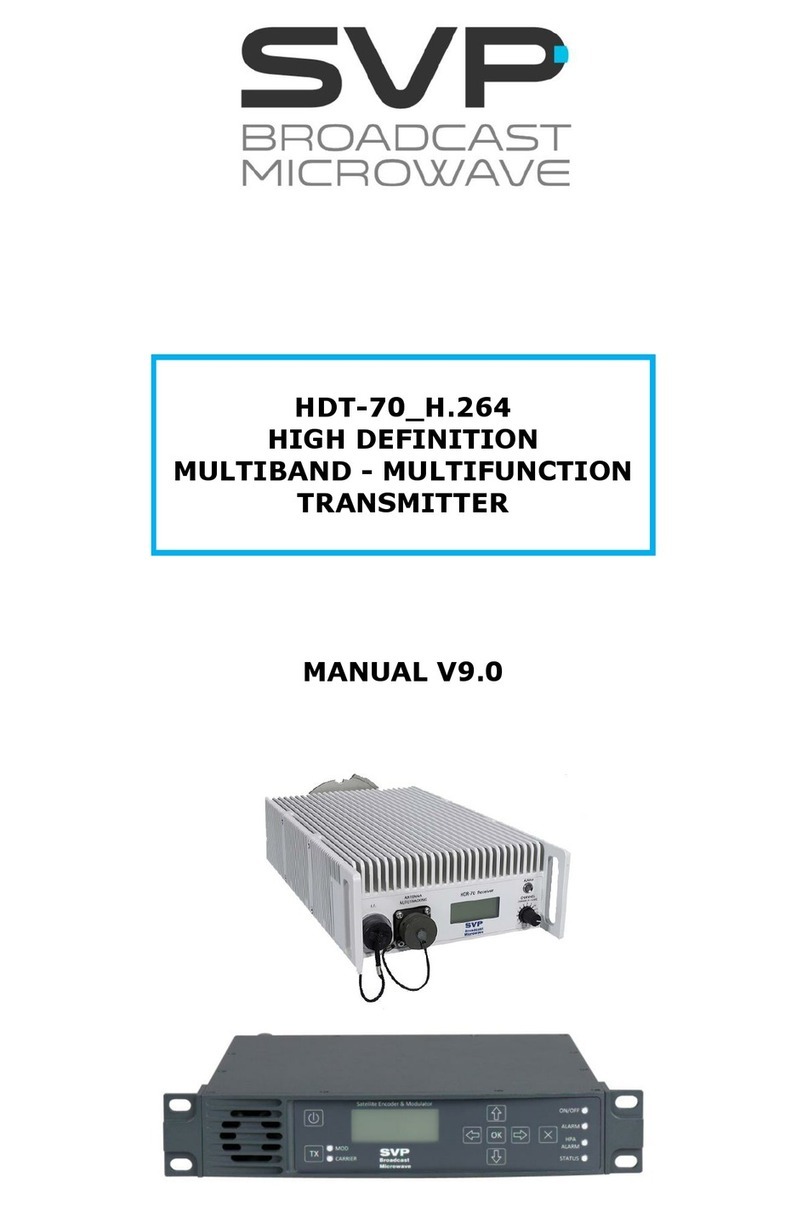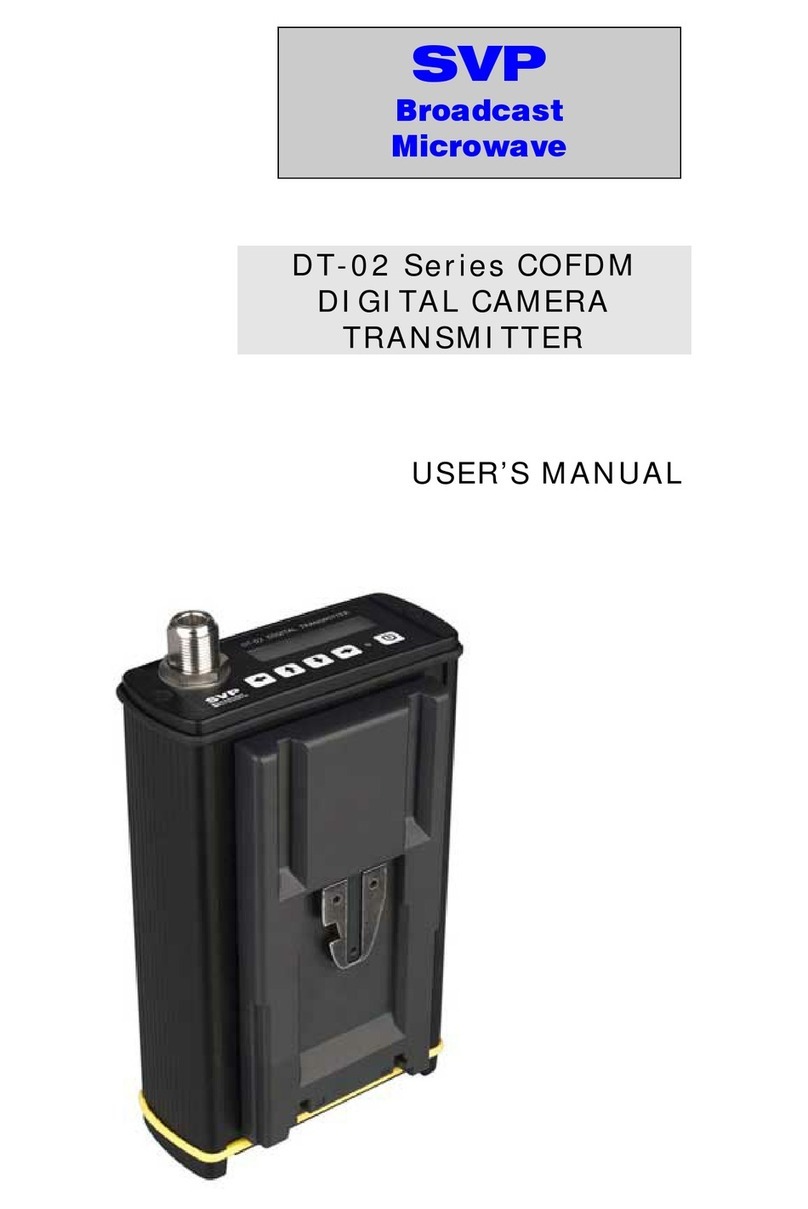
9
UDT-70 Two Box Portable Transmitter
MANUAL V1.0
Main Index
Contenido
Chapter 1: Introduction .......................................................................................... 11
Chapter 2:Technical Features.................................................................................. 15
Chapter 3: How to Order......................................................................................... 19
Chapter 4:Transmitter Operation and Menus.......................................................... 20
4.1 Display ...............................................................................................................20
4.2 Menus ................................................................................................................22
4.2.1 Menu Navigation ..................................................................................................................27
4.2.2 Menu Structure ....................................................................................................................28
4.2.3 Encoder Menu ......................................................................................................................29
Chapter 5: Web Server............................................................................................ 87
5.1.1 ENCODER ..............................................................................................................................87
5.1.2 RF ..........................................................................................................................................94
5.1.3 UNIT ....................................................................................................................................106
Web Page Setup Notes.................................................................................................111
Chapter 6: Equipment Installation......................................................................... 112
6.1 Introduction .....................................................................................................112
6.2 Connections......................................................................................................112
6.2.1 Power supply ......................................................................................................................114
6.2.2 Intermediate frequency......................................................................................................117
6.2.3 70 MHz TEST .......................................................................................................................117
6.2.4 L-Band DVB-S2 (Optional)...................................................................................................118
6.2.5 GPS (Optional) ...................................................................................................................118
6.2.6 RF AUX (Optional) ...............................................................................................................118
6.2.7ASI.......................................................................................................................................119
6.2.8 SDI 1 to 4.............................................................................................................................120
6.2.9 Transport Stream over IP OUTPUT (Optional) ....................................................................120
6.2.10 Audio inputs ...................................................................................................................120
6.2.11 Data input.......................................................................................................................121
6.2.12 USB connection ..............................................................................................................122
6.2.13 Remote...........................................................................................................................123
6.3 Rack Unit Installation..........................................................................................................124
6.4 Up-Converter and parabolic antenna installation ..............................................................124
6.5 Antenna Installation ...........................................................................................................125
Chapter 7: Up Converter ....................................................................................... 126
7.1 Front Panel .........................................................................................................................126
7.2 Display ................................................................................................................................127
7.2.1 Main screen ........................................................................................................................127






